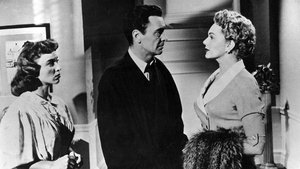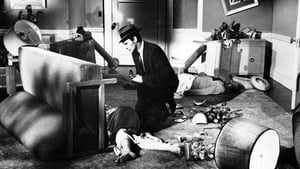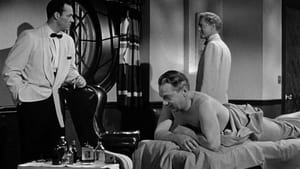Contact: [email protected]
Video Sources 0 Views

Synopsis
[ez-toc]




Introduction
In the enchanting realm of old films, where black and white once dominated the silver screen, a captivating transformation has taken place. The Miami Story Colorized, a noir classic from 1954, has undergone a mesmerizing metamorphosis through the magic of colorization. In this article, we embark on a journey through time and cinematic history, exploring the evolution of this iconic film and delving into the controversy and acclaim surrounding the colorization process.
Read Media File Transfer Agreement: Terms and Conditions
Read FAQ
The Significance of Colorization in Reviving Old Films
Film colorization, a technique that breathes new life into classic movies, has been a subject of both fascination and debate. As technology advances, the once-controversial process of adding color to black and white films has become a powerful tool for revitalizing cinema’s golden era. The clash between preserving the original aesthetic and embracing the vibrant hues introduces an intriguing dynamic to the world of film restoration.
Colorization has successfully ushered old films into the modern era, introducing these cinematic gems to a new audience. Controversies aside, it’s essential to appreciate how this technique has, in many cases, enhanced the visual appeal of classic movies, offering viewers a fresh perspective on beloved stories.
1. The Miami Story Colorized 1954: An Overview
Let’s step back to 1954, where Fred Sears, the visionary director, brought to life The Miami Story Colorized. Starring the talented Beverly Garland, this crime thriller originally graced the screen in classic black and white. The narrative, set against the backdrop of a crime syndicate, unfolds with gripping intensity. The film, considered a noir gem, now stands as a testament to the era’s cinematic brilliance.
Fred Sears, a director known for his adept storytelling, took the reins of The Miami Story Colorized, guiding the film through its initial release. The narrative, pulsating with suspense and intrigue, follows a tangled web of criminal activities in the steamy streets of Miami. The film garnered acclaim for its gritty portrayal of crime and corruption, a hallmark of the noir genre.
2. Directorial Vision: Fred Sears’ Approach to Colorization
Fast forward to the present, and The Miami Story Colorized experiences a resurgence in relevance through the art of colorization. Fred Sears’ directorial style, characterized by stark contrasts and atmospheric cinematography, laid a strong foundation for the film’s enduring legacy. Now, with the introduction of color, Sears’ vision takes on new dimensions.
Sears, renowned for his ability to craft visually striking scenes, approached the colorization process with a keen eye for detail. The choice of color palette becomes an integral part of the director’s vision, enhancing the atmospheric elements that define the noir genre. Sears’ careful consideration of color nuances transforms The Miami Story Colorized into a vibrant tapestry of hues while preserving the essence of its original noir identity.
3. Bringing Characters to Life: Beverly Garland’s Captivating Portrayal in Color
At the heart of The Miami Story’s allure is Beverly Garland’s exceptional performance. As the lead actress, Garland’s portrayal takes on new dimensions in the colorized version. Her character, once confined to the shades of black and white, now bursts forth with emotional depth and nuance.
Garland’s on-screen presence, a pivotal element in the success of The Miami Story Colorized, gains a renewed vibrancy through colorization. The subtle expressions, the play of light on her features, all contribute to a captivating viewing experience. The colorization process breathes life into Garland’s character, allowing audiences to connect with her in a way that transcends the limitations of monochrome cinema.
4. The Miami Story Colorized: A Rediscovered Gem of 1950s Cinema
Post-colorization, The Miami Story Colorized experiences a resurgence in popularity and appreciation. Audiences, both old and new, were captivated by the film’s cultural impact and thematic richness. The infusion of color not only modernizes the viewing experience but also introduces the classic to a generation that may have overlooked it in its original form.
The Miami Story Colorized, now in full color, becomes a rediscovered gem of 1950s cinema. The film’s intricate plot, coupled with the visual allure of color, draws audiences into a bygone era where crime and intrigue ruled the cinematic landscape. The noir aesthetic, intensified by colorization, cements The Miami Story as a timeless piece of cinematic art.
The Miami Story Colorized in the Context of Film Noir and Crime Cinema
To fully appreciate The Miami Story’s significance, we delve into the film noir genre and its defining elements. Film noir, characterized by its moody lighting, shadowy visuals, and morally ambiguous characters, finds a natural ally in The Miami Story Colorized. The infusion of color intensifies the genre’s characteristic elements, breathing new life into the atmospheric quality that defines noir.
The crime syndicate theme, a staple of noir storytelling, takes on a visual richness through colorization. The dark alleyways and smoky interiors, now bathed in hues of red and blue, evoke a sense of nostalgia while presenting a fresh take on the genre. The Miami Story, in color, becomes a testament to the adaptability of noir in the ever-evolving landscape of cinema.
Restoring Authenticity: Balancing Artistic Intention with Technological Advancements
In the pursuit of preserving cinematic treasures, the debate between authenticity and technological enhancement comes to the forefront. Colorization, as a tool in film preservation, raises questions about maintaining the director’s original vision. In the case of The Miami Story, the delicate balance between honoring the film’s noir roots and embracing the possibilities of color becomes a testament to successful restoration.
Colorization, when executed with respect for the filmmaker’s intent, becomes a bridge between the past and the present. The Miami Story stands as a shining example of how technological advancements can coexist with artistic integrity, breathing new life into classic films without compromising their original essence.
The Controversial Legacy: From Black and White to Full Spectrum
The legacy of film colorization is a tale of controversy, evolution, and acceptance. From its early days, where purists staunchly opposed the alteration of black and white classics, to the present, where colorization is seen as a valid form of restoration, the journey has been marked by heated debates and changing perspectives.
The Miami Story, with its successful transition from black and white to full spectrum, contributes to the evolving legacy of colorization. The film stands as a testament to the artistic possibilities that colorization offers, dispelling the notion that it merely dilutes the authenticity of classic cinema. As more films embrace the vibrant palette of color, the controversial legacy of film colorization continues to evolve, finding its place in the rich tapestry of film history.
Conclusion
In the grand tapestry of film history, The Miami Story Colorized 1954 emerges as a beacon of innovation and nostalgia. Fred Sears’ directorial prowess, Beverly Garland’s captivating performance, and the infusion of color breathe new life into a classic noir. As we celebrate the successful marriage of old and new, let The Miami Story serve as an invitation to explore the vast landscape of colorized movies.
In doing so, we honor the past, embrace the present, and anticipate the future of cinematic enchantment. The Miami Story, once confined to the monochrome memories of yesteryear, now stands as a testament to the timeless allure of storytelling, where the blending of old and new creates a cinematic masterpiece that transcends the boundaries of time.















